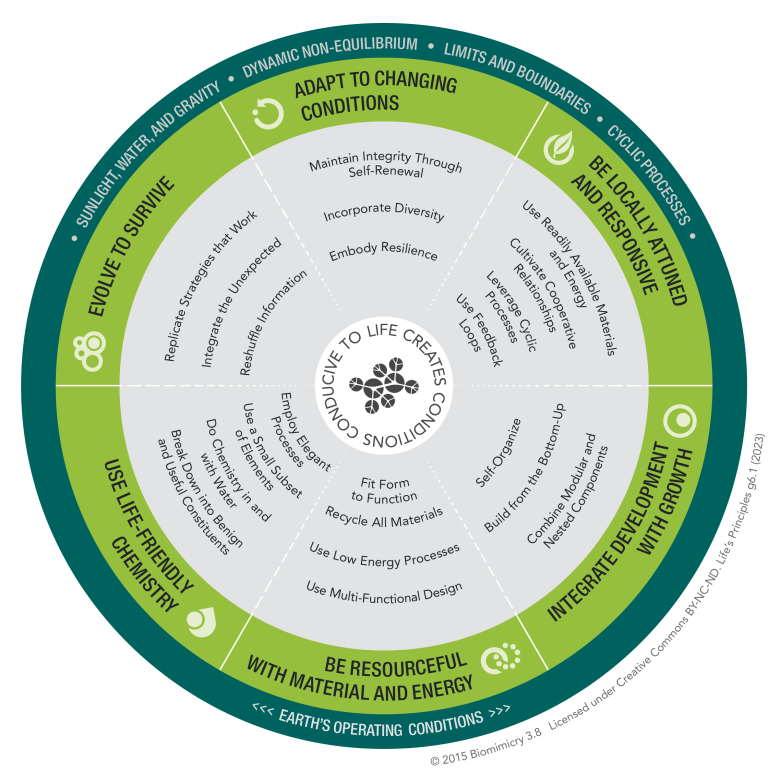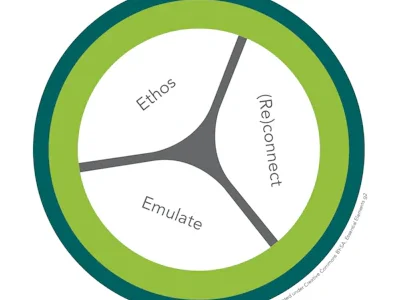Biomimicry has been big news in robotics for at least a decade. People have looked to other species for inspiration for robots with many intriguing results:
Here’s something we’ve just learned, though: biomimicry has a set of principles for guidance. Here they are, in a Creative Commons licensed graphic from Biomimicry.net.

A caveat
Actually, we think that anyone using a lizard or kangaroo or flea as inspiration for their robotic design is using biomimicry, even if, like us, they had never heard of the biomimicry principles. The word has meaning prior to and beyond the Biomimicry movement represented by Biomimicry.net and Biomimicry.org. Even so, this is a cool framework.
Design for decomposition
When you think about how to automate processes in manufacturing, it wouldn’t hurt to think also about the full life cycle of your products. The biomimicry movement would recommend that you start with renewable resources, plan how consumers will not just use but also reuse and recycle them, and make sure that there’s a plan for the eventual decomposition of the goods. In making these plans, the movement emphasizes, we should look to the existing natural cycles.
“As we spoke with industry experts,” the authors wrote in a report, “we realized that many of the suggested circular economy solutions do not align, and cannot align, with biological principles and the laws of physics.” They recommend that plans be based on how things actually work, not on ideas that would work if, say, we could just figure out the details of recycling petroleum products. Their vision of biomimicry is not just about replicating animals’ mobility adaptations, for example, and using them in robotics. It’s about working in harmony with natural processes.
That knocks out plastics, for the most part.
These suggestions may not be practical in your particular field at the moment, but the graphics above could nudge us in positive directions, at least.
